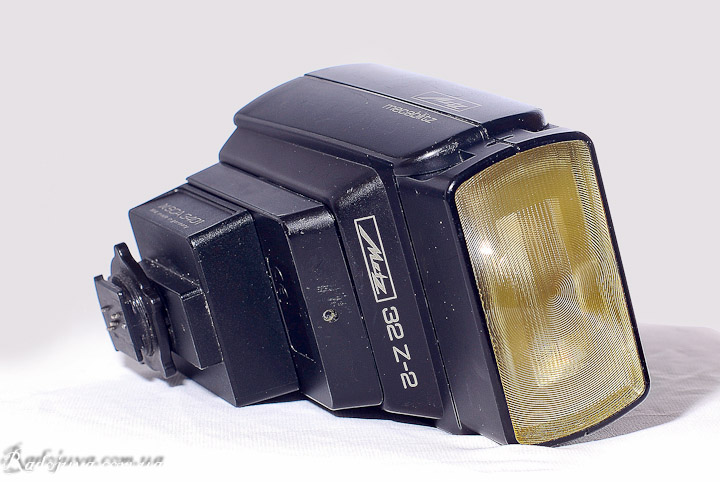
Metz Mecablitz 32 Z 1 Manual
Metz MECABLITZ 36 M-1 Manuals Manuals and User Guides for Metz MECABLITZ 36 M-1. We have 1 Metz MECABLITZ 36 M-1 manual available for free PDF download: Operating Instructions Manual.
I think I seem to acquire a mild case of FBA (Flash Buying Addiction) recently; while not finding the time to use them properly (yet!), I'm busy building a small collection of old compact Metz flashes of the 32 Z/MZ and 40 MZ series. I got all of them for less than 100 Euros (some for less than 50 Euros), and if you know their limitations they are quite worth their money - as excellent, reliable and consistent flashes.
Since not all their features are documented online, here a short tutorial on what to look out for if you want to buy a used compact Metz flash of this series for your Pentax DSLR. But don't forget to check first Jens R's site on Metz and other flashes: Okay, here we go: The compact flashes of the 32 Z/MZ and 40 MZ series need an SCA module to make contact to the camera.
For Pentax users there are three currently available modules that make sense (for the older analog modules check out Jens R's page): • the simple and cheap SCA 301 (around 8 Euros) - giving only a flash sync connection without any transmission of camera data to the flash; • the SCA 3702 (expensive, around 40 Euros), the dedicated Pentax AF adapter that transmit all sorts of camera data to the flash (e.g. ISO, aperture, focal length); • the SCA 3083 (even more expensive, around 50 Euros) that allows the flash to act as a wireless slave in different combinations. You will use the 3702 (or it's predecessor, the 3701) for a flash directly connected to your Pentax DSLR; then you can use it in Auto, some models even in 'Smart Auto' mode (check out Jens' page for details on this); with the *ist D and Ds there is even TTL support (albeit limited to ISO 200 and 400). There is currently no P-TTL/HSS support for those flashes, and there seems to be none in sight. Used with the SCA 301 you get a manual flash that is ideal for remote triggering by standard radio triggers or by conventional cable; the SCA 301 has an 2,5mm plug (female) built in, and with a standard adapter you can use radio triggers and / or studio flash cables that usually come with 3,5 or 6,3 mm jacks safely and easily. The SCA 3083 finally offers the possibility to use the flash as a remote wireless slave, triggered by another flash.
Download soundtrack clannad dango. The beauty is that with the MZ 40s you can use one as master and others as slaves, so Auto and TTL modes (if applicable) of all flashes can be controlled by a main flash. So what are the features of those different models of the 32's and 40's series? Here we go - again: 32 Z-2: Very compact model with swivel and tilt zoom reflector, but a manual one - no motorization. Works good as a TTL-flash for D/Ds. Works also in Auto mode (three auto aperture settings), but has no 'Smart Auto', since ISO and aperture are not read by the flash. No AF assist light.
Manual mode has no output regulation; only possibility to reduce the output is to switch into 'Winder' mode (max. 2 flashes per second, 1/15000s each). 32 MZ-3: Same as 32 Z-3, save these differences: Slightly larger; motorized zoom reflector; with AF assist light. 40 MZ-1: Larger and more powerful model with motorized swivel and tilt zoom reflector. TTL with the D/Ds, Auto, Manual and 'Smart Auto' modes with other Pentax DSLRs. Stroboscopic mode.
Very fine regulation of (maximum) output in Manual and Auto modes. Extra wide-angle diffuser (built in). User programmable.
Modelling Light mode. AF assist light. Buku jakarta undercover pdf download pc.
Can act as master or slave for wireless control; slave flash must have an SCA 3083 (or earlier model). 40 MZ-1i: Same as 40 MZ-1, but AFAIK supports some additional flash modes on a few special cameras (non-Pentax).
If P-TTL support is ever added from Metz with an updated SCA-adapter, the 'i'-Flashes are the most likely to support it; but no guarantees here 40 MZ-2: A tiny bit smaller and rounder than the 40 MZ-1, without Modelling Light mode and without the built-in wide-angle diffuser. Slightly different control layout. Beeper for different acoustic signals (e.g.
'flash ready') that can be turned off. Second flash reflector (can be turned off) for fill light (if main reflector is bounced).

Two different ND filters included for basic output regulation of the second reflector. Other features as with MZ-1.
No 'i'-Model. Beware: bouncer caps like those from Sto-Fen that are made for the 40 MZ-2 won't fit the MZ-1 or MZ-3 models - the MZ-2 is slightly smaller!
40 MZ-3: Same size, features and layout as MZ-1, but with second reflector as MZ-2. No ND filters for second reflector. Acoustic signaling feature same as with the MZ-2. 40 MZ-3i: Same as MZ-3, but additional support for some cameras (non-Pentax). See 40 MZ-1i. If you buy any of those flash guns used, beware of descriptions saying 'rarely used'. Make sure that the flash was at least used once every three months; else the flash can detoriate internally and malfunction is possible.